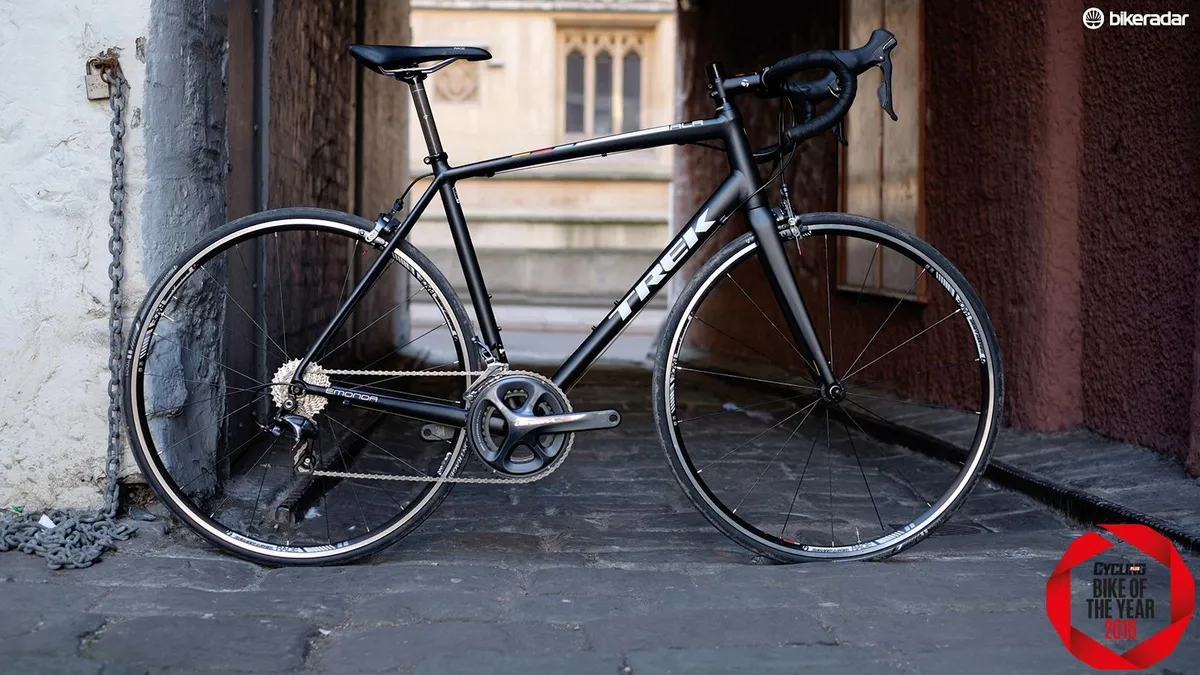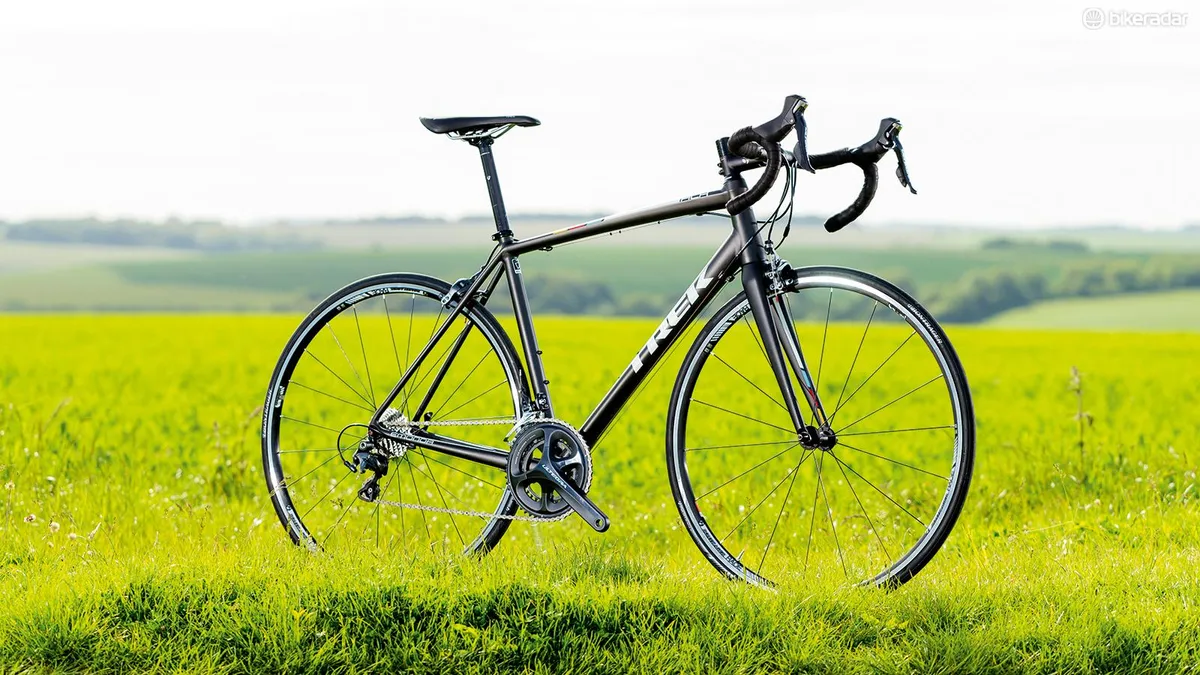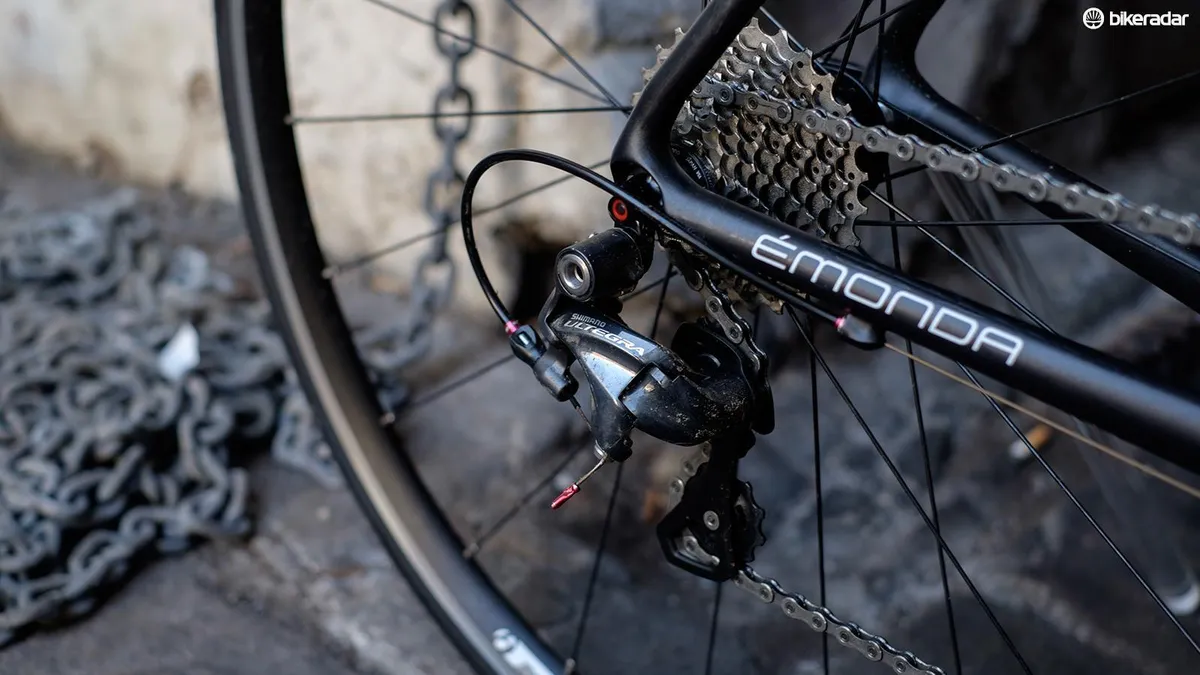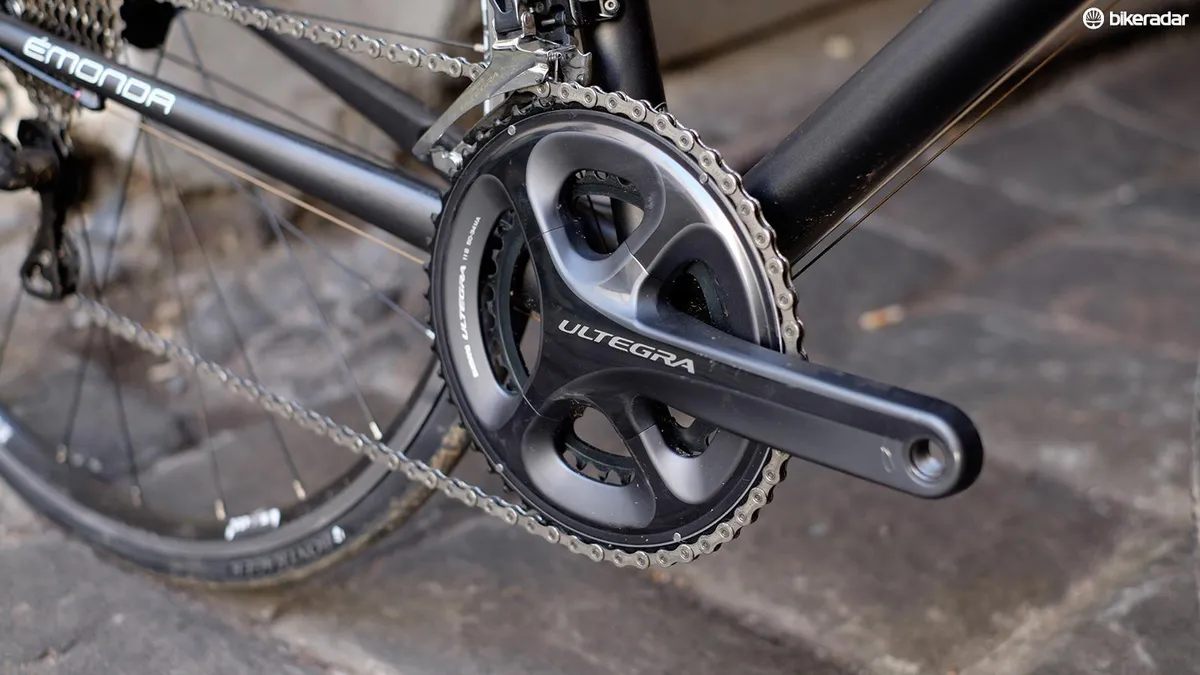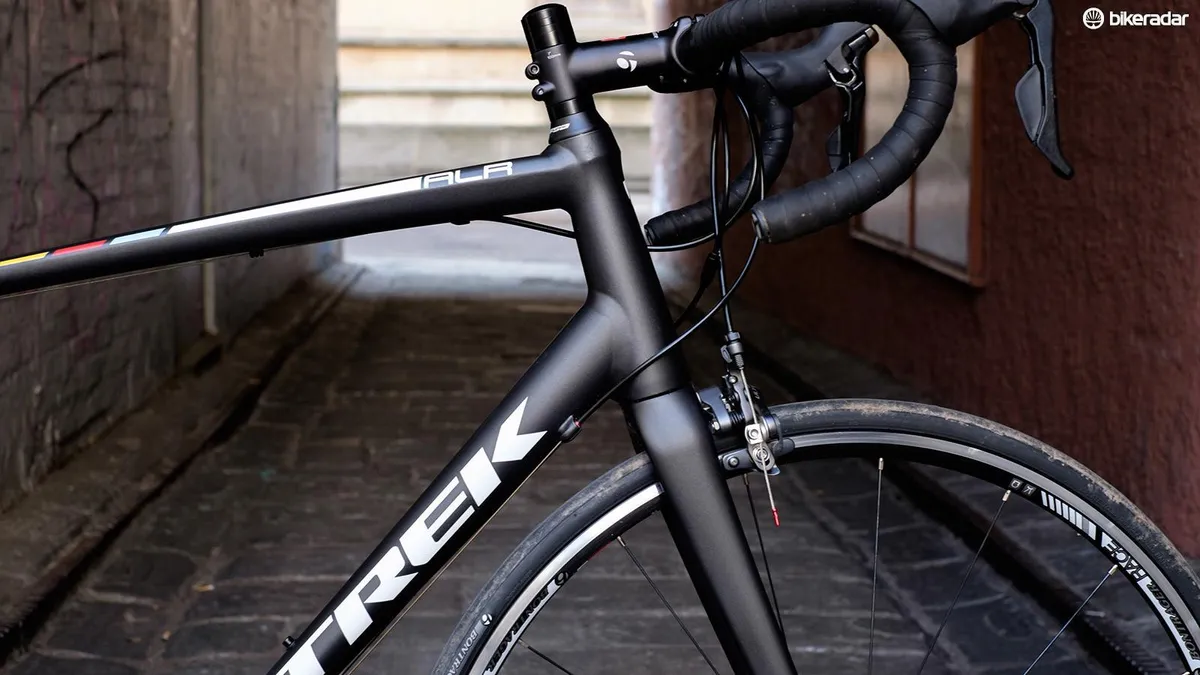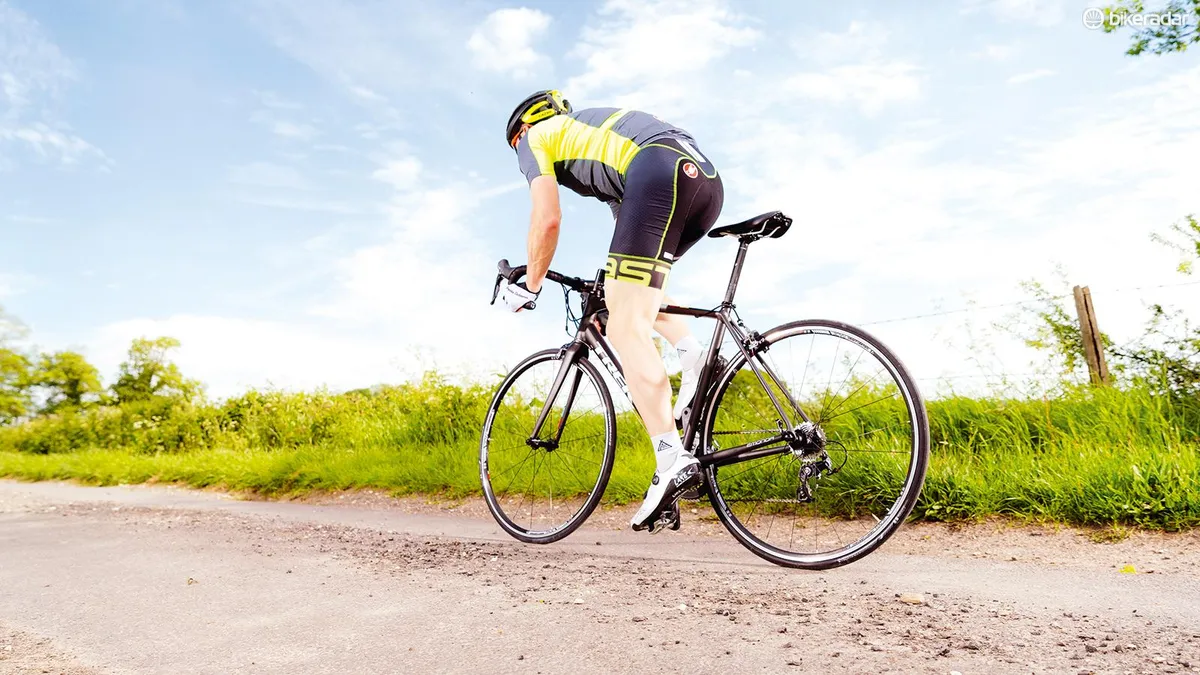Trek’s Emonda chassis joins the likes of Cannondale’s CAAD12 and Rose’s Pro-SL as an alloy bike to be taken seriously, very seriously. When the weights are comparable to carbon at the same money, yet the equipment levels are significantly higher, the case becomes compelling for going with metal over more fashionable composites.
It's no surprise then that the Emonda ALR6 made it onto the shortlist for our sister mag Cycling Plus's 2016 Bike of the Year awards.
The sculpted hydroforming of the top tube, which flows into the defined ridge on the tapered head tube, is just one element of a truly handsome chassis. The cowled dropouts sit at the end of highly asymmetric chainstays; these are bridge-free allowing for plenty of tyre room should you want to fit larger rubber.
The more you look, the more pleasing detail you’ll find.

It's a seriously lovely chassis
The full-carbon Emonda fork matches the classy alloy of the main frame beautifully. It's this base that means the ALR6 tipped the scales at an impressive 7.75kg for our size 58cm test bike.
The ride position follows the rules of Trek’s middle-ground H2 fit. That means a top tube length of 57.3cm, which gives a reasonable length to the ride position – the stack height of 59.6cm is tall, though not overly so, and the reach of 38.7cm is on the short side of racy.
Eager accelerator
The impression from the minute you get on board is one of a real willingness to accelerate. The ride position from the mid-compact alloy race bar further encourages you to stretch your legs and up the velocity, while the 99.2cm wheelbase means it’s as quick to change direction as it is to go forwards.
Helping get you up to speed is the flawless shifting coming from the Ultegra groupset. We like that Trek hasn’t deviated from Ultegra at all throughout the bike, and avoiding often-encountered downgrades to the likes of brakes and crankset adds a layer of class – not to mention bags of value. That’s not something we’ve said that often about Treks of the past – and is even more impressive when you consider this bike has had a price tag trim since we first got on board one last year.
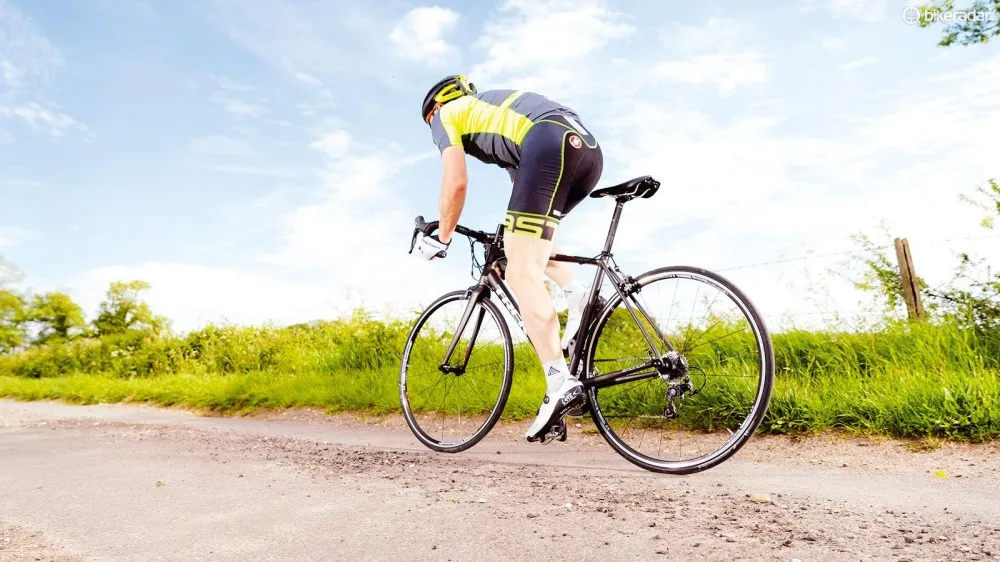
Climbing and acceleration on the alloy Emonda are impressive
Elsewhere it’s a mix of Trek’s component brand Bontrager parts. The cockpit of a Blender stem and alloy race bar is solid enough: the stem's design, which flows into the spacers smoothly looks classy, and the well shaped bar is a great example of a mid-range alloy item.
The Bontrager Race wheels may sit well down in the range, but even so they’re equipped with tubeless-ready rims and are neatly designed and built with an asymmetric rear rim laced to a narrow flange hub. That creates a wheel with very little dish (so the spoke angles and lengths are more equal). It creates a solid platform that’s low on energy-sapping flex, making sure your power is transmitted effectively.
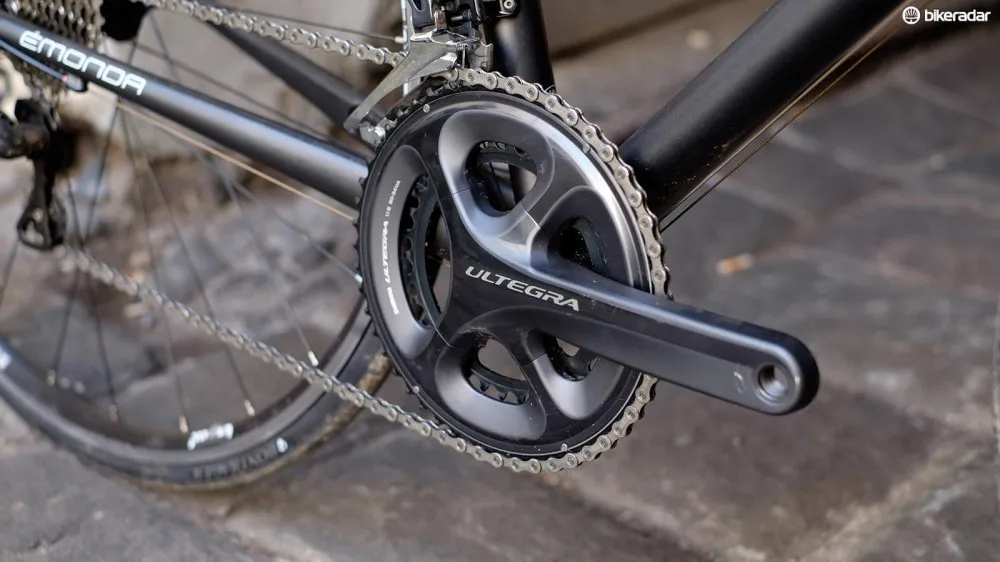
Including an unadulterated Ultegra groupset is a classy move from Trek
The tyres are on the whole okay – the puncture protection is welcome though they do feel a little hard-edged, never quite giving the levels of cornering grip you get from the best around. Their narrow 23c profile also means less cushioning over bad surfaces than we’d ideally like, and we’d love for Trek to switch up to a softer, smoother 25c, as the difference made would set the Emonda further apart from the competition.
Climbing on an Emonda is as positive on the cost-effective ALR as it is on the carbon SLR superbike. The wide BB shell, rock-solid chainstays and taut front end mean when you rise from the saddle to stomp up a climb the sensation is of a bike working in unison with you. It feels less like you trying to get a bike up hill; it's more akin to running up hill without the stress of your feet hitting the floor.
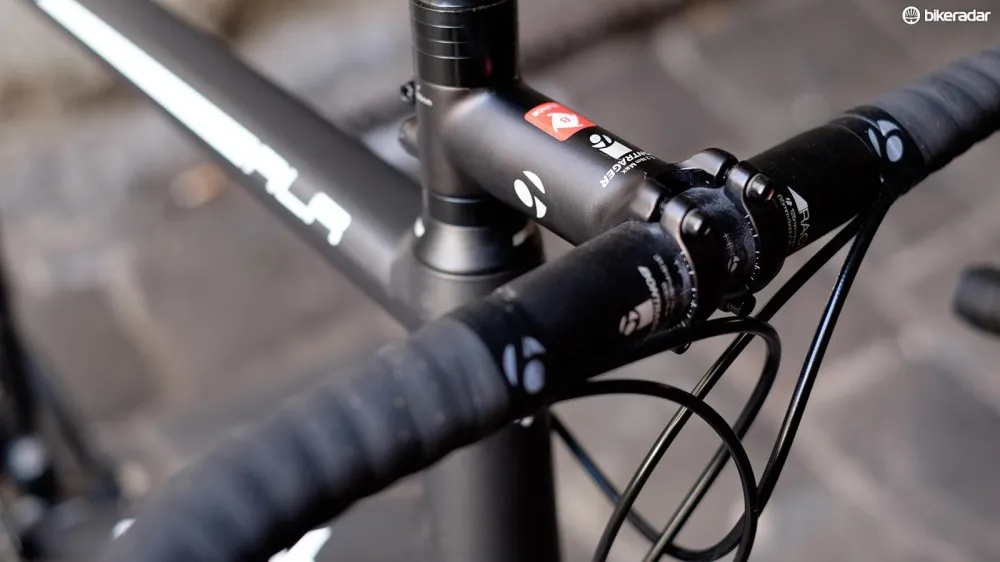
The Bontrager cockpit is solid stuff
Through twists and turns of fast rolling terrain or on descents the ALR feels nimble yet assured, never tipping into twitchiness often found on sharp-handling, shorter-wheelbased bikes. In all we're hugely impressed by the ALR – in this guise it's light, well equipped, exciting to ride and relatively forgiving on your wallet.
With a better set of rubber it’d be the complete package. But even as it is, it’s one of this year's truly standout bikes.
Also consider:
Giant Defy Advanced 2
The Defy Advanced 2 is a superb endurance machine with ability to spare and a great ride feel. Read our full Giant Defy Advanced 2 review.
Focus Cayo 105 Mix
Sporting a carbon frame proven at the elite level of riding, the Cayo 105 is a worthy canvas for inevitable upgrades. Read our full Focus Cayo 105 Mix review.
Cannondale CAAD12 105
With wonderful handling, a composed and smooth ride, the lightweight CAAD12 105 is the pinnacle of alloy road machines. Read our full Cannondale CAAD12 105 review.
null
